Like it's not a super-plant already, the string of pearls (Senecio rowleyanus) also has cinnamon-scented flowers and can thrive in the shade. It's certainly the ideal plant for amateur gardeners.
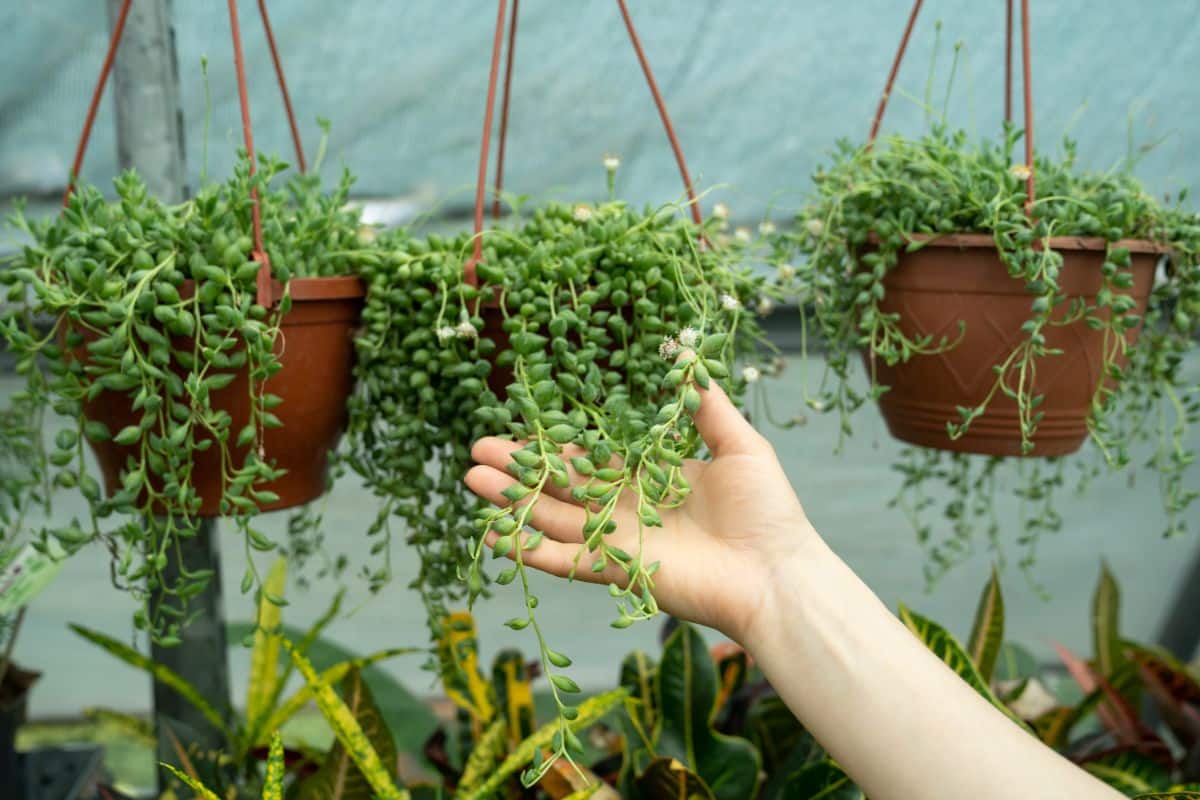
Oysters take a long time to make a pearl, but not a string of pearls. All it requires is minor work and an understanding of how to propagate a String of pearls plants.
You can propagate your string of pearls with water and soil. Sometimes nothing because this is one of those plants that can sometimes propagate itself.
So, even if you don't have one right now, get yourself a string of pearls, and let's start propagating!
Jump to:
What You Need to Know About Propagating Pearls
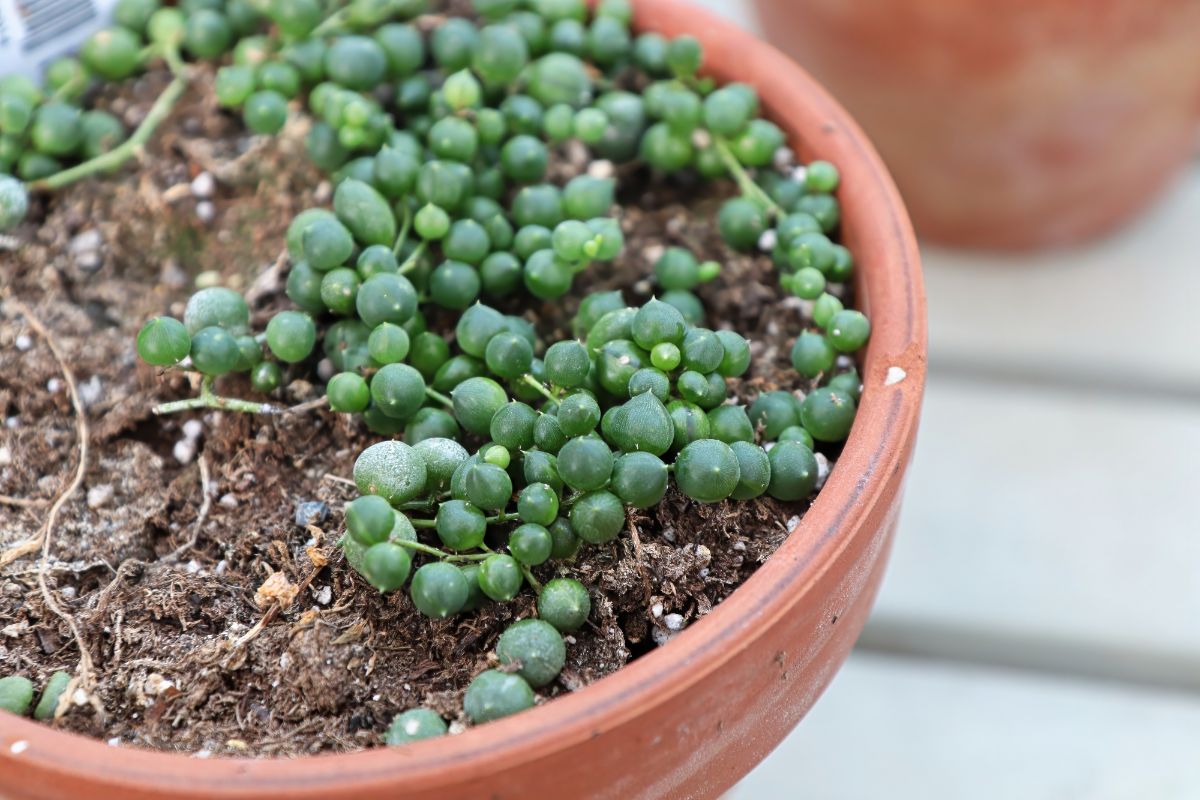
The String of pearls, otherwise known as the Senecio rowleyanus plant, is a famous, stringing, succulent plant that is really simple to propagate.
The String of pearls grows moderately and gets its popular name from the long stems developing round green beads or pearls.
With time, stems can get very long or get leggy when it doesn't have enough light. Pruning stems is relatively easy, and cuttings can be propagated to make one plant develop more new plants or to make the original plant grow fuller.
How to Propagate a String of Pearls Plant
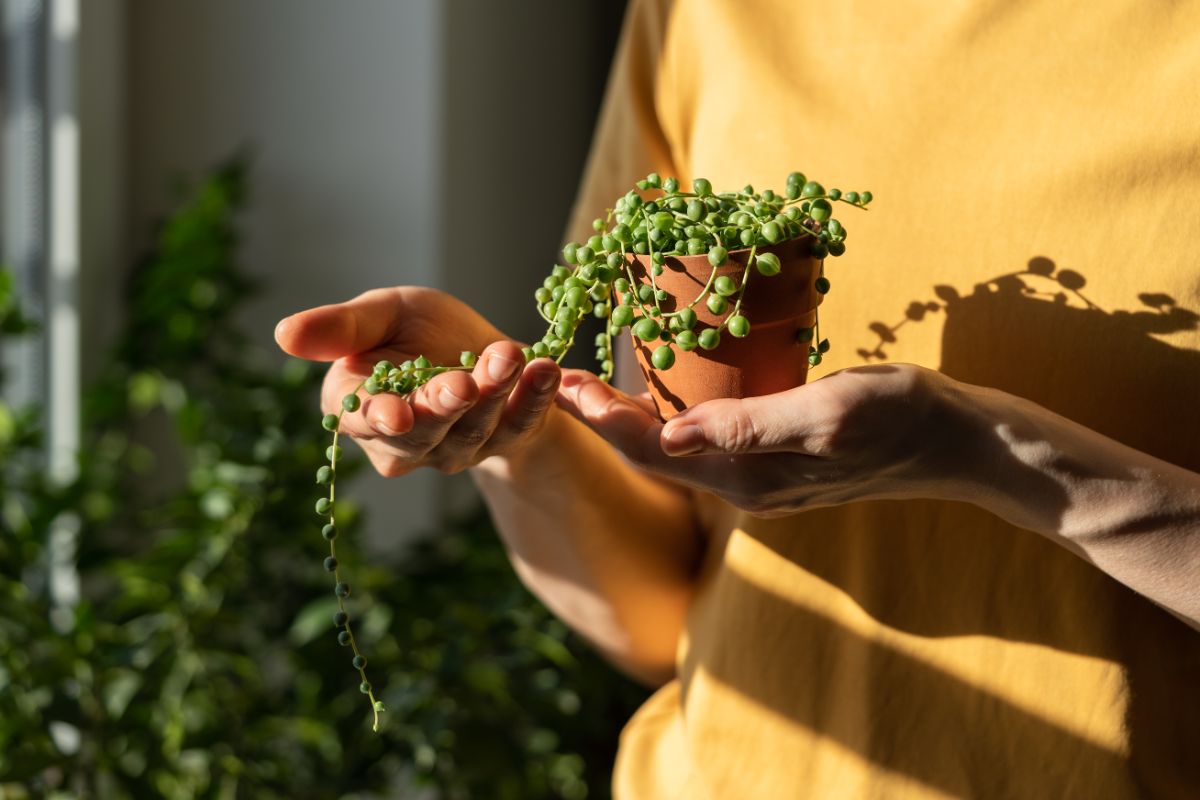
The String of pearls plant is actually easy to cut and propagate, and cuttings develop roots quickly.
Pruning and propagating can help a sparse-looking string of pearls grow fuller. Cuttings can be placed with the parent plant, and the other stems will germinate again and branch out where you cut them.
Grown with an abundance of bright light, an indoor string of pearls can develop quickly and get long.
The best time to propagate your String of pearls is during the warmer months, which is their active growth period.
That will enable the plant to root and develop new branches much faster.
You could do it during the spring or summer, though, or in the fall if you reside in a warm climate.
If you don't expose it to bright light, much of it, the stems can get leggy with plenty of spaces in between the pearls.
Not a pleasant look, I can assure you.
If your String of hearts gets too long or leggy, you can cut and prune it back.
Just cut the stems to your desired length or enough to eliminate the leggy growth.
Cut the stem just below a node where the pearls grow from the stem. This is where the plant will branch out.
Propagation in Water
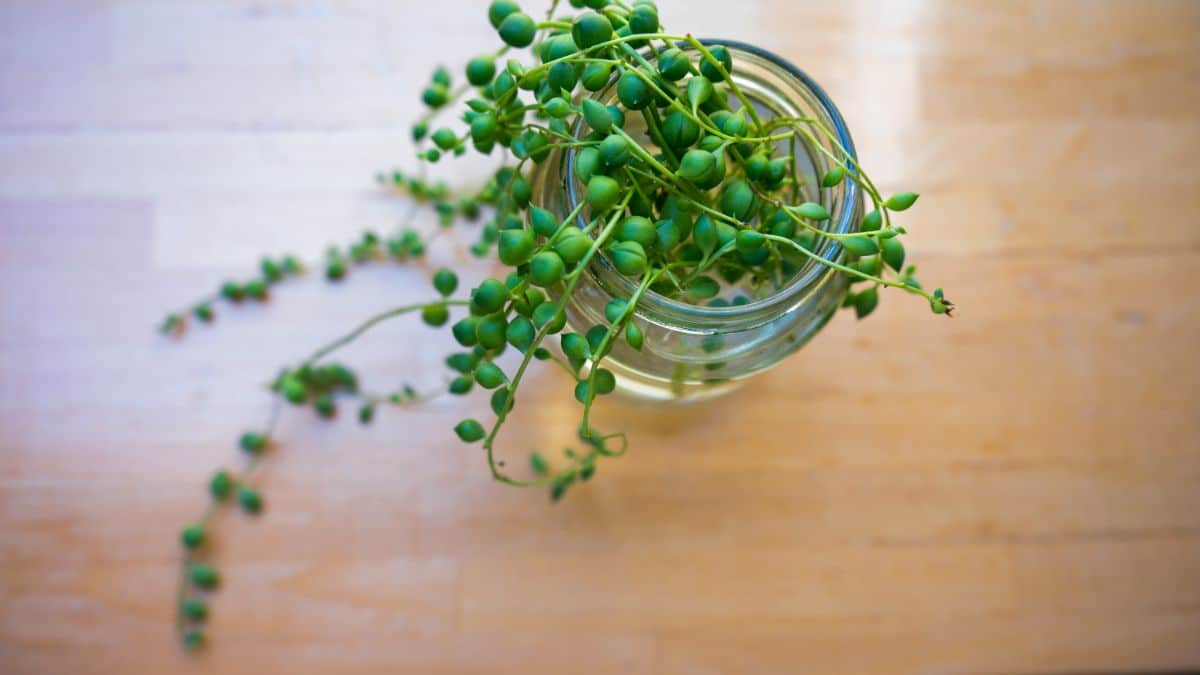
It's really easy to propagate your String of pearls in water. Its process is almost the same as propagating pothos cuttings in water.
You take the stem cutting from your existing plant. About 3–5 inches long should be enough.
Then you slowly trim the leaves off the bottom third. This is the part that you'll dip in the water.
It is recommended that you use a little glass bowl. It has the ideal size to enable the leaf-less stems to relax in the water.
Then, place the bowl in a part of your garden or veranda that gets good light and a good dose of midday, afternoon, and evening sun. Avoid direct sunlight, though!
Within some days, like 2-4 days, you'll notice thin white roots (almost translucent) begin to develop from the shoots on the stem.
You can change the water after a week; no other maintenance is required, so long as it gets enough light.
When the roots are okay to be planted in the soil, carefully plant the cuttings into a small container to root in the soil.
You must be extremely careful not to clip off the new roots while planting; they are still delicate.
After 2 to 4 weeks of further affirming their roots in the soil, and you don't notice any abnormalities, it's okay to say you have a new maturing plant.
You can report the String of pearls into a slightly larger pot where it will live until it outgrows it.
The speed of growth of the roots will rely on the season. It can be a quick process during summer, but it can take a few weeks in wintertime.
Propagating String of Pearls in Soil
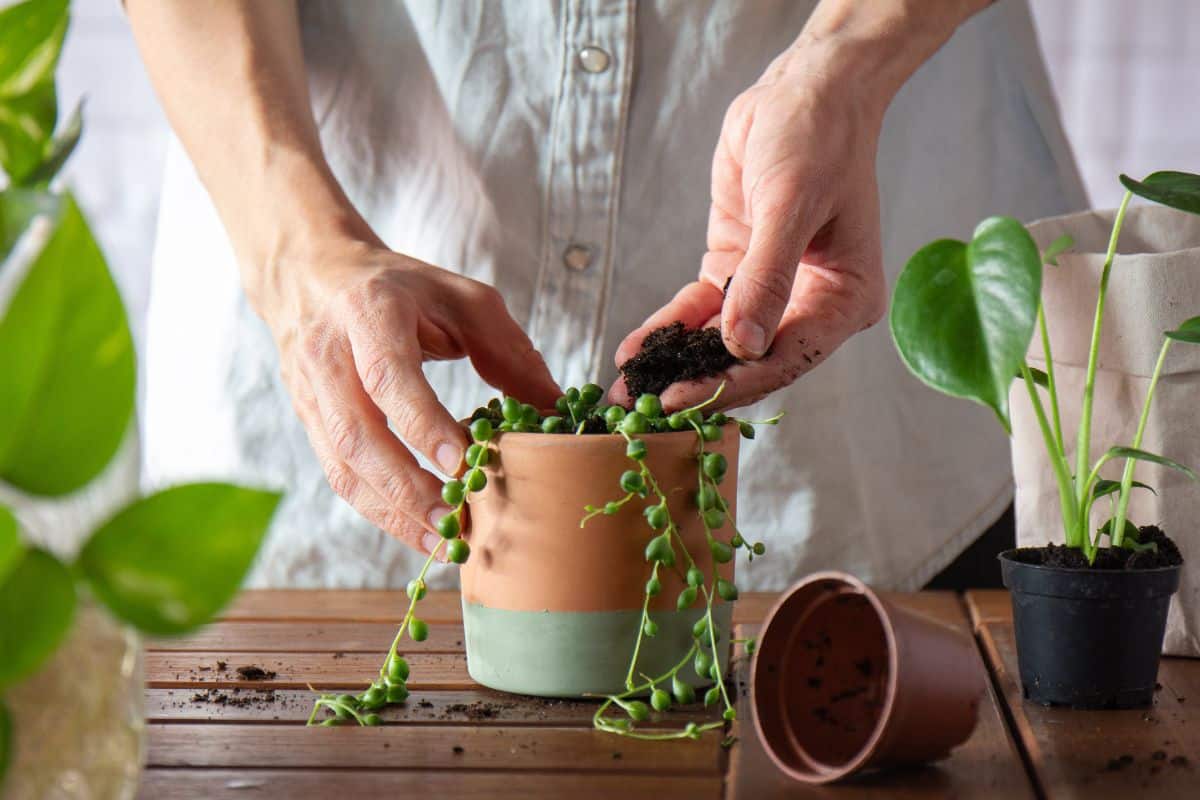
You can also propagate your String of pearl plants in soil, like the pear cactus.
The process for propagating a String of pearl cuttings in the soil is identical to rooting them in water, so you'll make the cuttings a little bit longer.
The first thing to do is to select the right strand to cut. It's best to cut from long, developed stems.
These stems could already be growing roots, which makes them simpler to propagate.
Select the ones with leaves that are chubby and firm, not wilted, withered, or mushy.
Instead of 3–5 inches, you'll cut 5 inches to get them comfortably planted.
You'll still remove the leaves from the bottom third or so of the cutting to uncover many nodes.
Now, rather than laying it in water to root, you'll plant it carefully in some well-draining potting soil.
Don't shove it down too tight.
Ensure not to over-water and that you have sufficient drainage. Nothing kills the Spring of pearls quicker than a water log!
You could also set the cutting out over the soil and water it to help it root. The new plant should start rooting promptly.
Conclusion
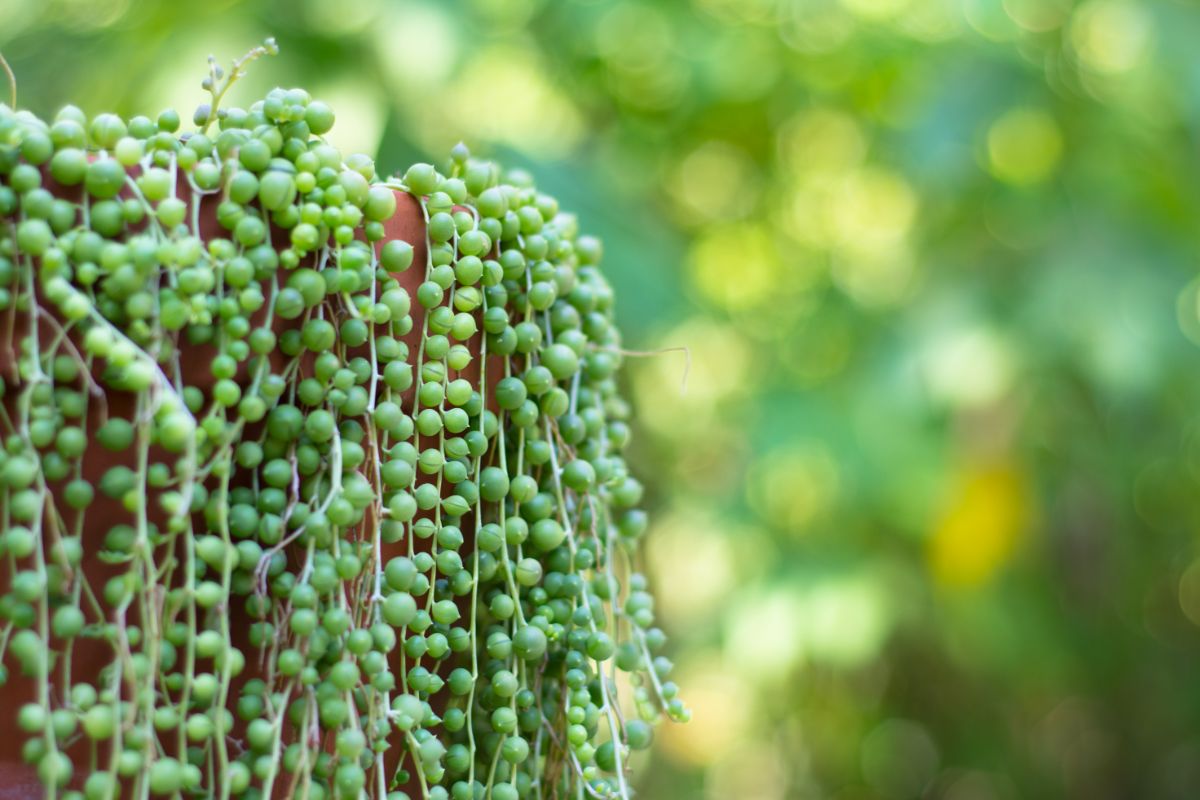
A deep understanding of how to propagate a string of pearls will help aid you in getting maximum success from planting these green beauties.
You can propagate them in both water and soil, but then know the various steps involved with using both to propagate your string of pearls.
Also, remember not to expose them to too much sunlight and also to remove excess water.




